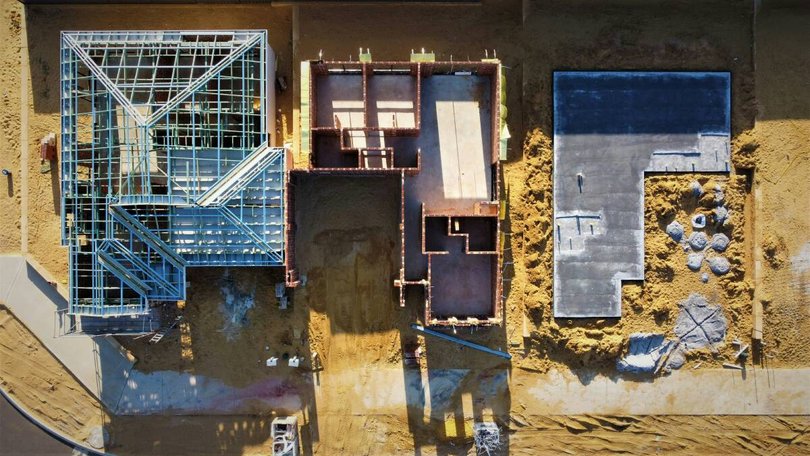Millennials at the forefront of a new housing boom beyond the capitals

Australia’s long-running trend of city slickers heading for the regions is officially a bona fide cultural shift, one reshaping the nation’s housing landscape - and has spurred calls for urgent regional-specific housing policy.
According to the Housing Industry Association (HIA), a record number of Australians are making a conscious choice to live outside capital cities, driven by affordability pressures, lifestyle appeal and expanding regional economies.
Sign up to The Nightly's newsletters.
Get the first look at the digital newspaper, curated daily stories and breaking headlines delivered to your inbox.
By continuing you agree to our Terms and Privacy Policy.HIA’s new Housing the Regions report shows nearly one-third of Australians now live in regional areas, with 8.5 million people calling the regions home.
Cotality data reveals that in the last June 2024 quarter alone, 27 per cent more people moved from cities to regional Australia than the other way around.
“The number of Australians moving from cities to the regions continues to grow, and this trend is expected to increase in the coming years as more people get priced out of living in metropolitan areas,” Simon Croft, HIA chief executive of industry and policy, said.
“With high house prices and cost-of-living pressures biting, many people are realising the regions can offer the lifestyle they want and the jobs they’re after, minus big city problems like long commute times, tolls and traffic.”

Millennials lead the regional charge
The stereotype of retirees heading regional for a quieter life no longer paints the full and changing picture.
The report highlights that millennials are now the largest cohort buying in regional Australia, attracted by job opportunities, community connections, and more affordable housing.
Many regional centres - from Bendigo to Ballarat, Albury to Armidale - are now buzzing with business activity and investment, offering “better bang for the buck” housing options and diverse employment opportunities.
“High rates of internal migration, whether from big cities or regional centres, show families want a combination of an idyllic lifestyle with adequate access to services and housing,” the report said.
“A structural shift is under way as relatively strong economic conditions in many regional areas and perceived greater availability of housing is pushing city residents away from the major capitals and towards the bush.”
For Mr Croft, this shift presents both opportunity and urgency.
“Housing policies need to deliver for regional Australia and not just be an adjunct of inner-city policies set in Melbourne, Sydney and Canberra,” he said at HIA’s Regional Housing Roundtable in Bendigo on Tuesday.

Pressure builds on regional housing markets
While the regions are increasing in popularity, many communities are struggling to keep up with an influx of demand - a supply issue across both the regions and capital cities.
“The flow of new listings coming into regional markets is tracking about 8.5 per cent lower than a year ago,” Cotality’s head of research Tim Lawless said.
“In the capitals it’s down about 9.5 per cent, and total listings are 15.3 per cent lower than last year in the capitals compared with 13.9 per cent lower across regional areas.”
However, the HIA warns that housing shortages are now worse across most regional towns than in the capital cities.
The report identifies three key challenges holding back supply. They are a lack of shovel or build-ready land; insufficient investment in enabling infrastructure such as roads, water and utilities; and severe worker shortages across construction and local government planning roles.
“Builders must also contend with environmental approvals that can take years to conclude,” Mr Croft said.
“They are acutely aware of the massive pent-up demand for new housing in these areas, however, they need the systems around them that facilitate delivery of more homes working for them - currently the opposite is true.”

A call for a dedicated regional housing plan
To address these issues, the HIA is calling for a targeted regional housing plan, backed by a 20-point blueprint to increase housing supply, streamline approvals, and boost investment in infrastructure and skills.
Their suggestions include the likes of creating and enhancing regional satellite cities; implementing planning reform measures; addressing labour shortages; encouraging private sector development; and boosting the supply of all forms of housing.
Mr Croft said the goal is to ensure the regions have the resources and support to meet population growth - and not simply absorb overflow from capital cities without tailored regional-specific alignment.
“This shift in population highlights the importance of the need for appropriate investment in the regions to bolster services, skills and infrastructure needed to support a growing population,” he said.
“Even more critically, it reinforces the importance and the need for a targeted regional housing plan that includes the volume of supply needed and [to] provide affordable and diverse housing options.”
The future of regional living
The message from the HIA is clear: with property pricing in the capitals trending upward and supply unable to keep pace with demand, Australia’s population will become increasingly regional - and housing policy needs to catch up.
With the right investment and planning reform, regional hubs could become the nation’s next growth engines, offering affordable homes, strong communities and thriving local economies.
Originally published as Millennials at the forefront of a new housing boom beyond the capitals
